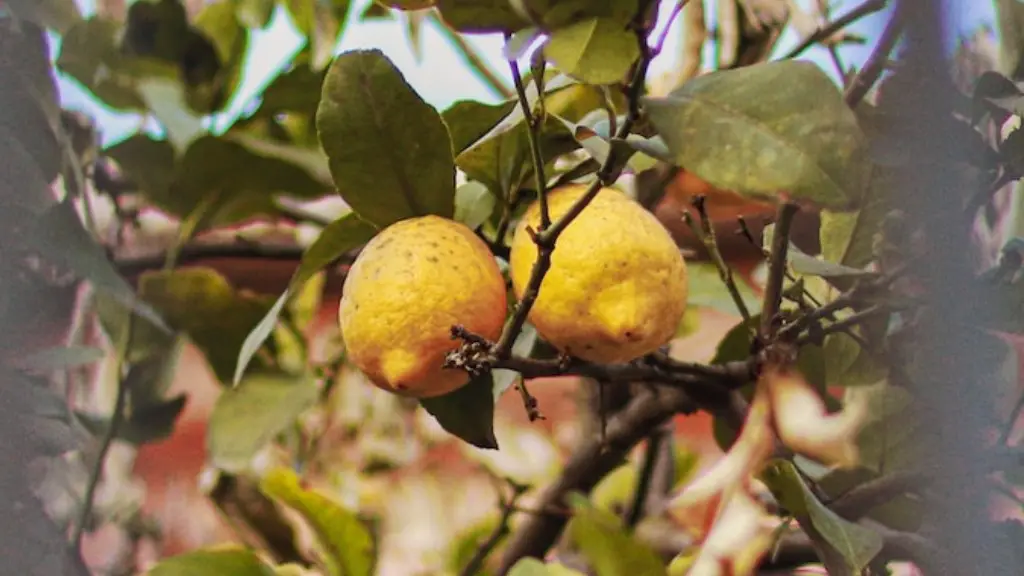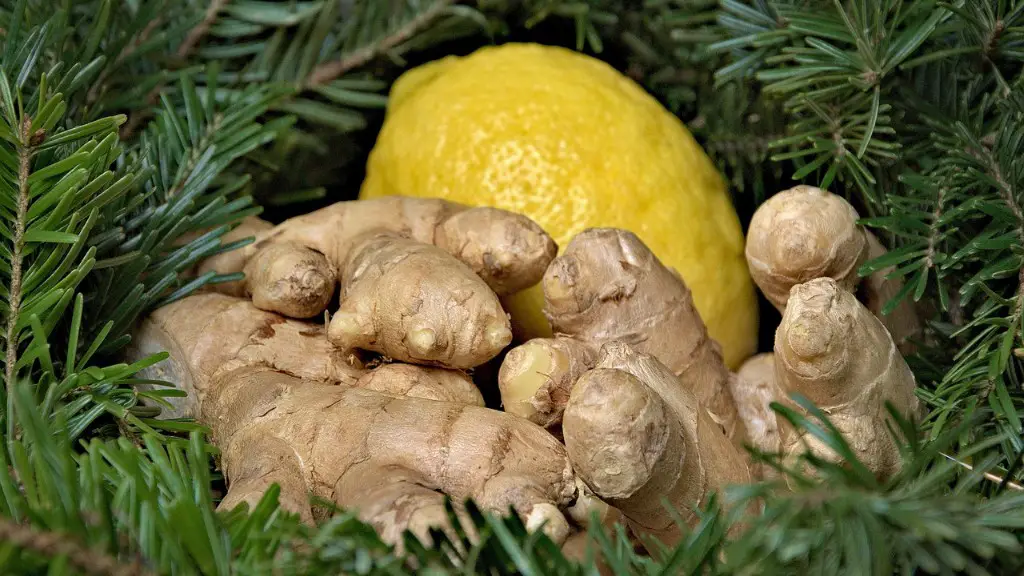Planting a lemon tree in the right place can be an excellent way to enjoy its sweet and zesty fruit without a lot of effort. With a bit of know-how and some helpful tips, you will have your lemon tree planted in no time. If you want to make sure that your lemon tree flourishes for many years to come, it’s important to choose the best spot for it.
When selecting a spot to plant your lemon tree, you want to look for one that receives plenty of sunlight. Lemon trees need at least 8 hours of direct sunlight each day in order to grow and produce fruit. Make sure to avoid areas that have heavy shade, since these will inhibit the growth and impact the quality of the fruit.
In order to thrive, a lemon tree needs to have well-draining soil. It’s best to select a spot in your garden that has sandy soil, since this type of soil is able to absorb any excess moisture and water quickly. Additionally, it will also help the tree to develop strong and healthy roots.
When it comes to planting a lemon tree, warmer climates such as those found in Mediterranean countries are the ideal choice. Lemon trees in these climates are not only able to survive the intense heat but also benefit from the increased level of humidity. Therefore, it’s best to find a location in your garden that receives a good amount of sun and humidity.
It’s also important to consider any potential hazards that might affect the growth of your lemon tree. Make sure to check for any nearby structures, such as trees and buildings, which might cause shade to the tree. Additionally, you should also consider the effects of wind, which can cause the tree to suffer from windburn.
Finally, it’s important to choose a spot where you can easily access the tree for maintenance and harvesting. It should be both convenient and comfortable for you to reach. With this in mind, pick a patch of land that is within reach and doesn’t require too much effort.
Maintenance for Your Lemon Tree
Regular maintenance on your lemon tree is essential for it to produce the maximum amount of sweet, succulent fruit. This involves watering the tree every few days, making sure it has access to enough sunlight and pruning dead branches. Make sure to protect the tree from any severe weather conditions, as these can be damaging. Additionally, fertilizing the tree every few months can be beneficial in helping it to grow healthy and strong. Lastly, inspect the tree regularly for any signs of disease or insect infestations.
Harvesting Your Lemon Tree
The right time to harvest your lemon tree will depend on the time of year and the weather conditions. Generally, you should wait until the fruit has fully ripened and is golden in color before picking. However, bear in mind that the tree may be ready for harvesting even before the fruit has reached this stage. Keep an eye out for any lemons that have started to turn yellow and pick these before they start to shrivel.
When the time comes to harvest your lemons, the best thing to do is to use pruning shears to cut the fruit from the tree. You should then leave the harvested lemons in the sun for a few days to increase their sugar content. Once the lemon juice reaches its desired sweetness, it’s time to store the fruits in a cool, dry place until you are ready to use them.
Protecting Your Lemon Tree from Pests
Unfortunately, lemon trees are vulnerable to a range of pests, which can be damaging to the tree and can affect the quality of its fruit. The most common of these pests are aphids and mealybugs, which can be controlled with pest repellent sprays or by manually removing them. Additionally, the use of companion plants like marigolds and garlic can be helpful in keeping these pests away from the tree.
Keeping your lemon tree healthy and happy is also important in protecting it from pests. Make sure to provide your tree with enough moisture and nutrients, prune it regularly and apply mulch around its base to keep it safe from unwanted insects.
Fertilizing Your Lemon Tree
Fertilizing your lemon tree on a regular basis will help it to grow healthy and strong. This should be done every few months in order to ensure that the tree is receiving the nutrients it needs. A general-purpose fertilizer is usually sufficient, but you can choose a specific fertilizer depending on the needs of your particular tree.
When applying the fertilizer, make sure to spread it evenly around the base of the tree. Additionally, avoid applying too much as this can have a negative effect on the tree. Be sure to check the instructions on the package to find out the recommended amount of fertilizer to apply.
Pruning Your Lemon Tree
Pruning is an important part of keeping your lemon tree healthy and producing the maximum amount of fruit. It’s essential to trim any dead or weak branches in order to increase the amount of light and air that reaches the tree. Additionally, pruning also helps to improve the shape of the tree and make it easier to harvest the fruit.
Make sure to prune your lemon tree at least once a year, preferably in the spring. When pruning, you should use sharp, clean pruning shears and focus on removing any dead branches or stems. This will help to keep the tree in optimal condition and prevent it from becoming overgrown.
Common Issues with Lemon Trees
There are several issues that can occur with lemon trees, including pests and diseases. The most common diseases that affect lemon trees are citrus blight and citrus canker, which cause the leaves and branches to become distorted. Additionally, pests such as aphids and mealybugs can damage the leaves and fruit of the tree.
In order to prevent these issues, it’s important to inspect your lemon tree on a regular basis for any signs of infestations or diseases. If you notice any signs of either of these, it’s important to take action quickly in order to protect your tree. This could involve applying a pest repellent spray, pruning any infected branches or providing additional nutrients.



